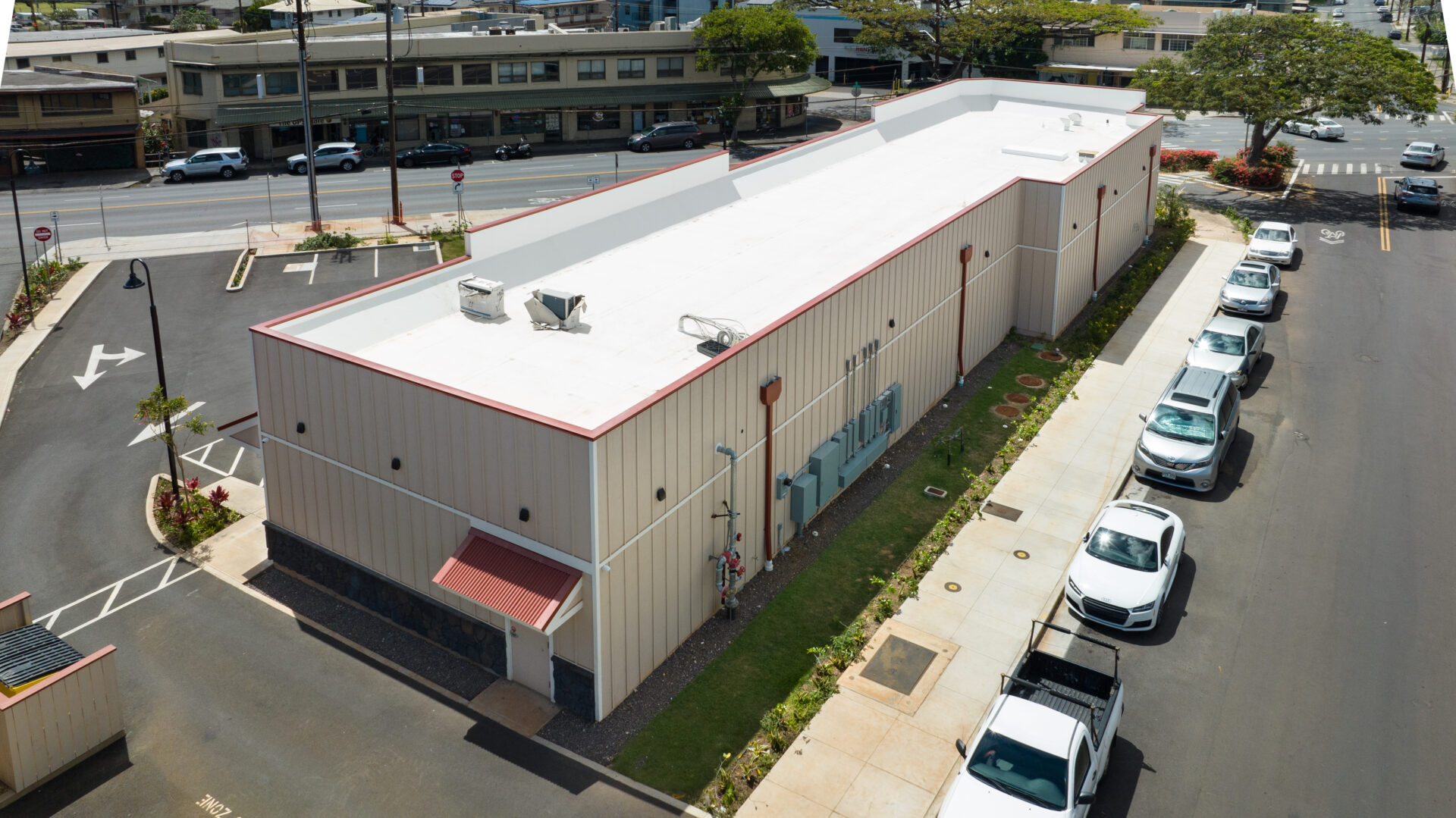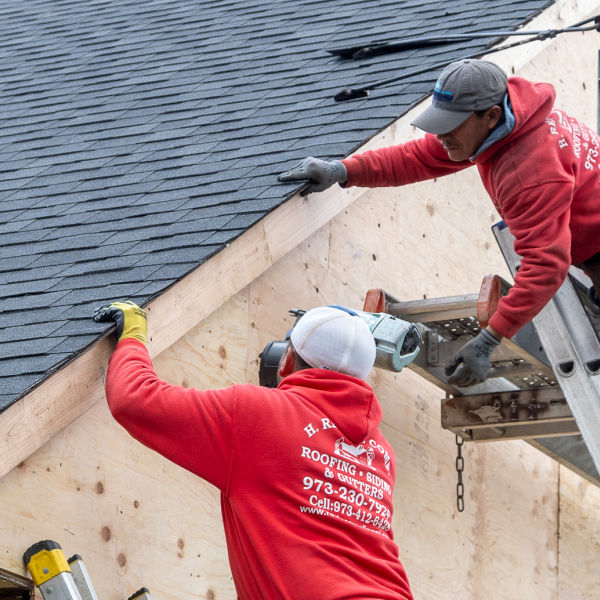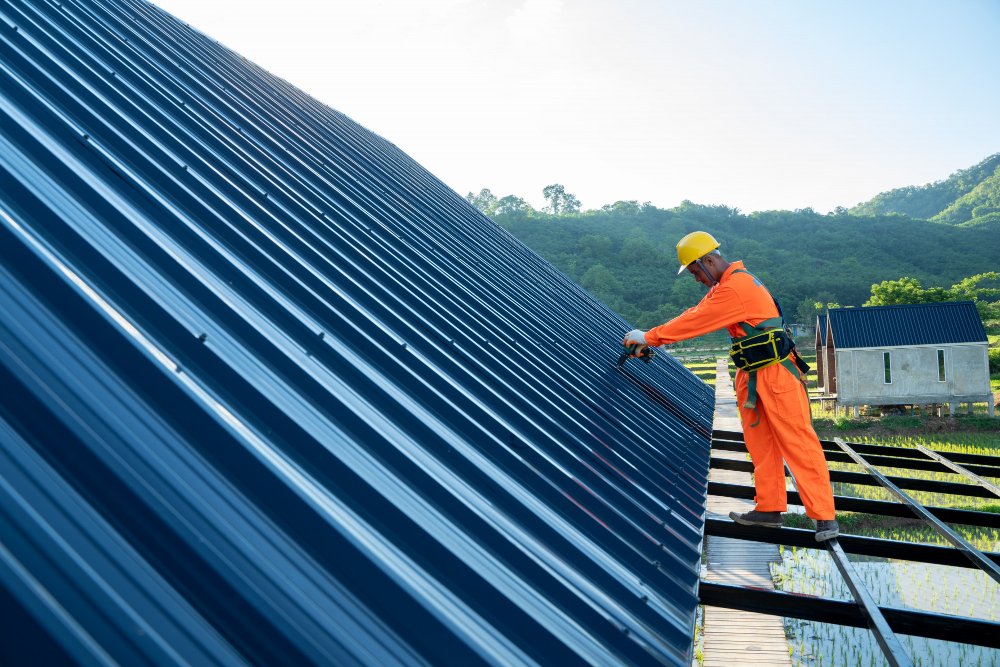Long-Lasting Roof Systems from Leading commercial roofing Hawaii Providers
Typical Repair Work in Roof Covering That Every Home Owner Must Understand
As a home owner, it's vital to acknowledge usual roof problems that can lead to considerable problems down the line. Roof leakages, tile damage, and stopped up gutters can all endanger your home's stability. Disregarding these fixings may cost you more in the long run. Recognizing how to attend to these issues can conserve you time and cash. So, what actions can you require to assure your roof stays in leading condition?
Recognizing Roof Leaks
Just how do you know if your roofing system is leaking? Beginning by inspecting your ceilings and wall surfaces for water spots or staining. If you discover dark spots or peeling off paint, that's a red flag. Next off, examine your attic. Try to find moist insulation or water beads on beams, which can suggest a leak. Throughout rainfall, scan and order a flashlight for any kind of signs of dampness. Take notice of the roof covering's incline and valleys, as these areas usually accumulate water.
Don't fail to remember to analyze your roofing from the outside. In addition, inspect flashing around chimneys and vents; damaged flashing can lead to leaks. Overlooking the issue can lead to a lot more extreme damage and pricey repair work down the line.
Shingle Damage and Substitute
When it comes to roof, tile damage can cause bigger issues if not addressed immediately. You'll wish to identify the various sorts of damages and understand the steps for changing your tiles. Let's explore what you require to do to maintain your roof in leading form.
Types of Tile Damages
Although roof shingles are developed to stand up to the elements, different sorts of damage can compromise their integrity gradually. One common concern is curling, where the edges or edges of the roof shingles raise up, typically due to age or inappropriate setup. Splitting can also happen, typically from extreme temperature variations or influence. Missing out on tiles are one more worry; high winds or dropping particles can easily displace them. Additionally, you may see granule loss, where the protective granules deteriorate, exposing the underlying product to UV rays and dampness. Algae growth can create, resulting in undesirable streaks and possible deterioration. Knowing these kinds of roof shingles damage allows you to resolve concerns promptly and keep your roof covering's problem.
Replacement Process Steps
Changing damaged tiles involves an organized strategy to assure your roof covering stays long lasting and safety. Beginning by recognizing the harmed roof shingles-- look for cracks, crinkling, or missing pieces (oahu roofing). When you've determined the problem locations, gather your materials: new tiles, roof covering nails, and a hammer
Next, thoroughly get rid of the harmed roof shingles, seeing to it not to disrupt the surrounding ones. Afterwards, move the new tiles into location, making specific they align properly with the existing shingles. Secure them with nails, and secure any kind of revealed areas with roof covering adhesive to stop leaks. Check your work to identify whatever's secure and tight. With these steps, you can recover your roof covering's integrity and extend its life expectancy.
Clogged Gutters and Downspouts
When debris accumulates, it avoids water from moving away from your roofing and foundation. This can create water to pool on your roofing system, raising the risk of leaks and damages to your shingles.

To stay clear of these issues, you ought to routinely clean your downspouts and seamless gutters, especially during the loss when fallen leaves abound. If you're awkward doing it yourself, it's a good concept to utilize a ladder safely or hire a specialist. You can additionally set up gutter guards to reduce debris buildup. Remember, maintaining clear rain gutters is crucial for shielding your home's roof and overall honesty. Normal checks will conserve you money and inconvenience down the line, guaranteeing your roof operates effectively.
Blinking Issues
When it concerns your roofing, blinking plays a vital function in protecting against leakages. You need to be aware of the various kinds of flashing products and the common problems that can develop. Understanding exactly how to repair these concerns can save you money and time down the line.
Sorts Of Flashing Materials
Flashing products play a vital function in avoiding water leaks and securing your roof. There are a number of kinds you should consider for your home. First, light weight aluminum flashing is lightweight, rust-resistant, and simple to set up, making it prominent for lots of roof coverings. There's copper blinking, understood for its durability and visual appeal, commonly made use of in premium applications. If you're looking for adaptability, rubberized blinking can adapt to different roof covering shapes, giving solid seals. You may encounter vinyl flashing, which offers exceptional resistance to dampness but isn't as durable as metal choices. Picking the right blinking product can considerably boost your roof covering's longevity and performance, so make certain to weigh your alternatives thoroughly.
Usual Flashing Troubles
Also the most effective blinking can encounter problems over time, leading to potential leaks and damage. One typical issue you might face is improper installment. If the flashing isn't fitted snugly against the roofing system, water can seep below, causing rot and mold. Another trouble is deterioration, specifically with metal blinking, which can damage gradually because of direct exposure to the elements. You may likewise see gaps or splits, specifically around chimneys and vents, where blinking can deteriorate. Additionally, inappropriate securing can cause water merging, raising the risk of leaks. Routine examinations can help you capture these issues early, allowing you to safeguard your home from pricey fixings in the future. oahu roofing. Do not forget these blinking issues; they can save you a great deal of difficulty.
Flashing Repair Methods
Dealing with blinking concerns quickly can stop additional damage to your roofing system. It's necessary to act fast if you see any kind of fractures or leakages. Beginning by inspecting the blinking around chimneys, vents, and valleys for any signs of degeneration. You can usually repair it with roof cement or sealer if it's damaged. For even more considerable damages, think about changing the blinking completely. Eliminate the old flashing, ensuring the location is tidy, and after that set up the brand-new flashing, safeguarding it with nails and applying sealant. Always look for correct overlap to avoid water invasion. Regular maintenance and examinations can help catch these concerns early, conserving you money and time in the long run. Don't wait up until it's far too late!
Ventilation Issues
When your roof does not have commercial roofing hawaii proper air flow, it can cause a host of problems that jeopardize its stability and your home's convenience. Poor air flow catches heat and moisture in your attic, creating tiles to deteriorate faster and promoting mold and mildew development. This can increase your energy expenses as your HVAC system works overtime to preserve a comfy temperature.

Routinely inspecting your ventilation system is crucial, specifically after severe weather or adjustments in the seasons. Do not think twice to call a roof specialist if you find your roof covering isn't ventilated correctly. They'll aid guarantee your roofing system remains in top problem, securing your investment and boosting your home.
Roofing Punctures and Openings
Poor ventilation isn't the only risk to your roofing system's stability; roof leaks and holes can lead to major problems. These openings can allow water to leak into your home, causing mold, architectural damages, and pricey repairs. You could not even see a leak till it's also late, specifically if it's little or hidden under roof materials.
Normal evaluations are necessary. Examine your roofing after heavy storms or extreme climate problems, as debris can quickly create leaks. Do not think twice to act if you detect any type of holes. You may be attracted to patch them up yourself, yet it's often best to call an expert. They can assure an appropriate repair and stop additional damage. Keep in mind, addressing roofing slits and holes promptly protects your home and conserves you money in the future. Keep your roof in leading condition by remaining watchful about its upkeep.
Moss and Algae Development
Moss and algae growth can quietly hold on your roofing, creating significant problems in time. These organisms grow in damp, shaded areas, often leading to a build-up of dampness that can wear away roofing products. It's a sign that you need to act quickly. if you see green streaks or spots.

You can remove moss and algae using a blend of water and bleach or by hiring a professional. Installing zinc or copper strips along the ridge of your roofing system can likewise hinder future growth. Remaining proactive will certainly assist preserve your roof's honesty and prevent pricey repair services down the line.
Regularly Asked Inquiries
How Commonly Should I Check My Roofing System for Concerns?
You ought to inspect your roof a minimum of twice a year, ideally in spring and autumn. Likewise, check it after serious climate events. Regular assessments aid you catch prospective concerns before they become costly repairs.
Can I Carry Out Roofing Services Myself?
You can do roofing fixings on your own, yet it's crucial you assess your skills and security. Think about employing a professional if you're unclear. Constantly prioritize safety and recognize when to seek help for a lot more intricate problems.
What Are the Indicators I Required a Roof Covering Substitute?
You'll know it's time for a roof covering substitute if you find significant leakages, considerable shingle damages, drooping locations, or noticeable mold. Don't wait also long; addressing these indicators early can save you cash in the lengthy run.
Exactly how Lengthy Does a Roofing System Fixing Commonly Last?
A roofing repair work generally lasts anywhere from 5 to 15 years, depending on problems and materials. oahu roofing. You should check its problem regularly to catch any type of possible issues prior to they rise into bigger troubles
What Is the very best Period for Roofing Repair Works?
The ideal season for roof covering repairs is commonly springtime or autumn. Throughout these times, temperature levels are mild, and weather are more secure, enabling service providers to work successfully and ensuring your roofing system gets the interest it needs.
Conclusion
By on a regular basis examining for leaks, shingle damage, and clogged up seamless gutters, you're securing your home from serious problems. Keeping an eye on these elements will assist preserve your roof's honesty and prolong its life expectancy, eventually safeguarding your investment for years to come.

Changing harmed tiles entails a systematic method to assure your roofing system remains protective and durable.Addressing flashing problems immediately can prevent additional damages to your roof covering.Poor ventilation isn't the only threat to your roofing system's honesty; roof covering leaks and openings can lead to significant issues.